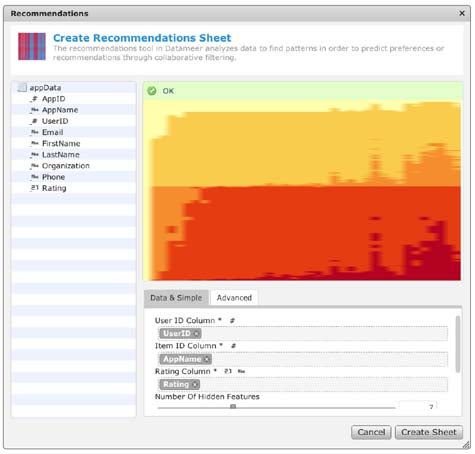One of the great paradoxes of Big Data is that while the frameworks such as Hadoop for storing it are inexpensive, the people needed to set Big Data analytics applications are both prohibitively expensive and hard to find.
Data scientists frequently command salaries in the range of $250,000 a year and there seems to always be some organization willing to pay them more than your company can afford. The sad fact is, however, that the average data scientist spends most of their time organizing data, which is not what most organizations are paying them to do. The organization of the data is nothing more than a means to an end.
As part of an effort to make it easier to organize data and in some instances even eliminate the need for a data scientist, Datameer today released an upgrade to its namesake Big Data analytics application that with a single click identifies patterns, relationships and can even generate recommendations based on data stored in Hadoop.
Datameer CEO Stefan Groschupf says the Smart Analytic functions being added to Datameer 3.0 are specifically designed to reduce the organization’s dependency on data scientists. Rather than paying data scientists to address data plumbing, Groschupf says Datameer 3.0 allows organizations to use HTML5 user interfaces to instantly start leveraging Hadoop data without having to spend months trying organizing it.
Groschupf says that Big Data analytics applications are already evolving along a similar path as ERP applications. Once upon a time, every organization built its own ERP system; now most organizations wouldn’t even consider it. Today most organizations build their own Hadoop applications, but that won’t make much sense either when full-blown commercial analytics applications are already available.
While there’s clearly a massive amount of interest in Hadoop, IT organizations would do well to remember that Hadoop is a means to a business outcome. Unless the organization is able to derive actionable business insights from its investment, Hadoop winds up being an interesting exercise in computer science that is of little interest to the average business.




